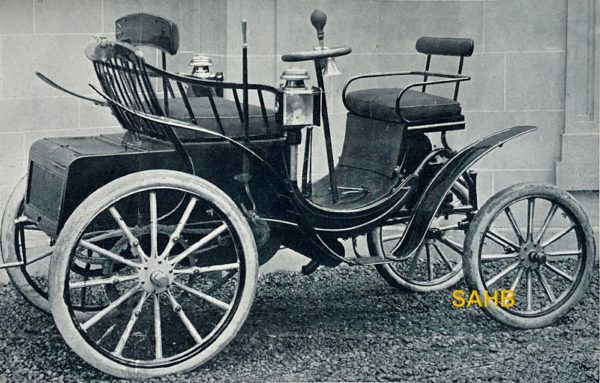
The story behind this early motor car comes from a flyer, found tucked into a 13 July 1901 issue of Motor-Car Journal – and, pinned to it, a promotional letter dated only three days later, signed by Managing Director John Stirling and headed “Coachbuilders and the Motor Trade.” In the letter, Stirling made an impassioned argument that traditional coachbuilders should “engage in the new industry” for “self-propelled carriages.”
Stirling alluded to the fact that the automobile was “winning favour among the highest in the land, not excepting His Majesty King Edward VII and his consort both of whom own and drive motor carriages.”
He went on to explain his own success since deciding to add a motor car department to his business as early as 1896. To convince those coachbuilders still hesitant to move into the motorised world he was offering his own “4½ H.P. Parisien Phaeton” to the coach trade at a 25% discount on the retail price of 185 guineas.
He made some persuasive points about the qualities of the car: “a carriage simple in construction, substantially built on coach lines, thoroughly reliable, easy to manage, and therefore an excellent car for beginners and one admirably suited for ladies’ use.” He then referred to the fuller information on the “enclosed sheet” – the flyer.
This flyer, with the photograph in our Snapshot, was advertised as the “Stirling Parisian [sic] Phaeton” (the alternative spelling was possibly due to a mistake). Its origins were made clear with the words “Panhard Light Car.” It was powered by a “4 ½ H.P. Daimler-Dion type Motor” (apparently purchased from Daimler in Coventry), and among other equipment was fitted with “both Tube and Electric Ignition.” The car was “fully Licensed” – probably to allay fears that the chassis and engine were being used without paying due royalties.
Stirling’s company started in 1862 as J. and C. Stirling of Hamilton, Lanarkshire as traditional coachbuilders. Stirling’s Motor Carriages was formed in 1897 and acquired the earlier company – indicating a determined move into the motorised era. The letter quoted above was sent from the company’s offices in Sauchiehall Street, Glasgow. They were said to have bought Coventry Daimler chassis and fitted them with their own coachwork, finishing the first such car (fitted with a Panhard-Levassor engine) as early as January 1897, several weeks before the first Coventry Daimler car was sold. By 1899 they were advertising Pennington cars, under appointment by Pennington and Baines, and by 1901 were basing their cars on imported Panhards.
In 1902 they took over the former works of Madelvic Motor Co of West Shore Road, Granton, Edinburgh, and concentrated increasingly on commercial vehicles. Sadly, it appears that financial issues arose in 1903 and the company was sold to Scottish Motor Engineering in 1905. No cars were heard of after 1903.
Photo courtesy of The Richard Roberts Archive.
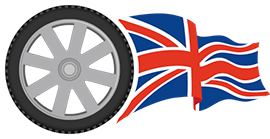


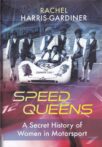
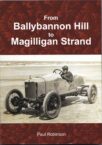
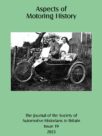
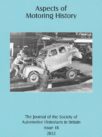
Leave a Comment